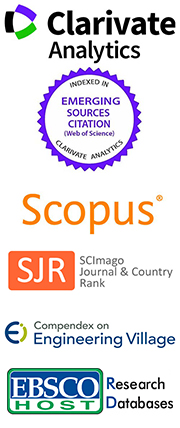Performance and Economic Analysis of Solar Tracking Systems for Renewable Energy-based Water Aeration
Abstract
Keywords
Full Text:
PDFReferences
Onchit C., Sonwai T., Chaisa S., and Kluebang J., 2021. Solar powered aerator for public reservoir. Journal of Academic and Research, Rajamangala University of Technology Phra Nakhon (Science and Technology) Special Issue 15(2): 106–110.
Pongpeera K., Phumchumphon S., Teeboonma A., Namkhet A., and Somsila P., 2022. Study on performance of small solar water pump for household. Farm Engineering and Automation Technology Journal 8(2): 157–168.
Boonma P., Nuin C., and Unahalekhaka P., 2018. The Venturi aeration for water treatment by applying micro-bubble ozone: Case study at Pra-Pimol Racha canal, Sai Noi, Nontaburi. RMUTSB Academic Journal 6(1): 45–54.
Toylan H., 2020. Design and application of solar tracking system using optimized fuzzy logic controller by genetic algorithm. Mugla Journal of Science and Technology 6(1): 136–145.
Naskar J., Rahaman S., Dey R., Nag S., and Das M., Comparative study of dual axis sun trackers for better solar panel efficiency. 2025. American Journal of Electronics & Communication 1: 1-4
Sneineh A.A. and W.A. Salah. 2019. Design and implementation of an automatically aligned solar tracking system. International Journal of Power Electronics and Drive System 10(4): 2055–2064.
Chin C.S., Babu A., and McBride W., 2011. Design, modeling and testing of a standalone single axis active solar tracker using MATLAB/Simulink. Renewable Energy 36(11): 3075–3090.
Kishore D.D., Suresh G.V., and Singh A.M., 2021. Comparative simulation analysis of static, single axis and dual axis solar tracking system for better performance evaluation. International Journal of Creative Research Thoughts 9(4): 5190–5197.
Metropolitan Electricity Authority. 2025. Electricity tariff rates. [On-line serial], Retrieved May 1, 2025 from the World Wide Web: https://www.mea.or.th/our-services/tariff-calculation.
DOI: https://doi.org/10.64289/iej.25.03A11.9649115


